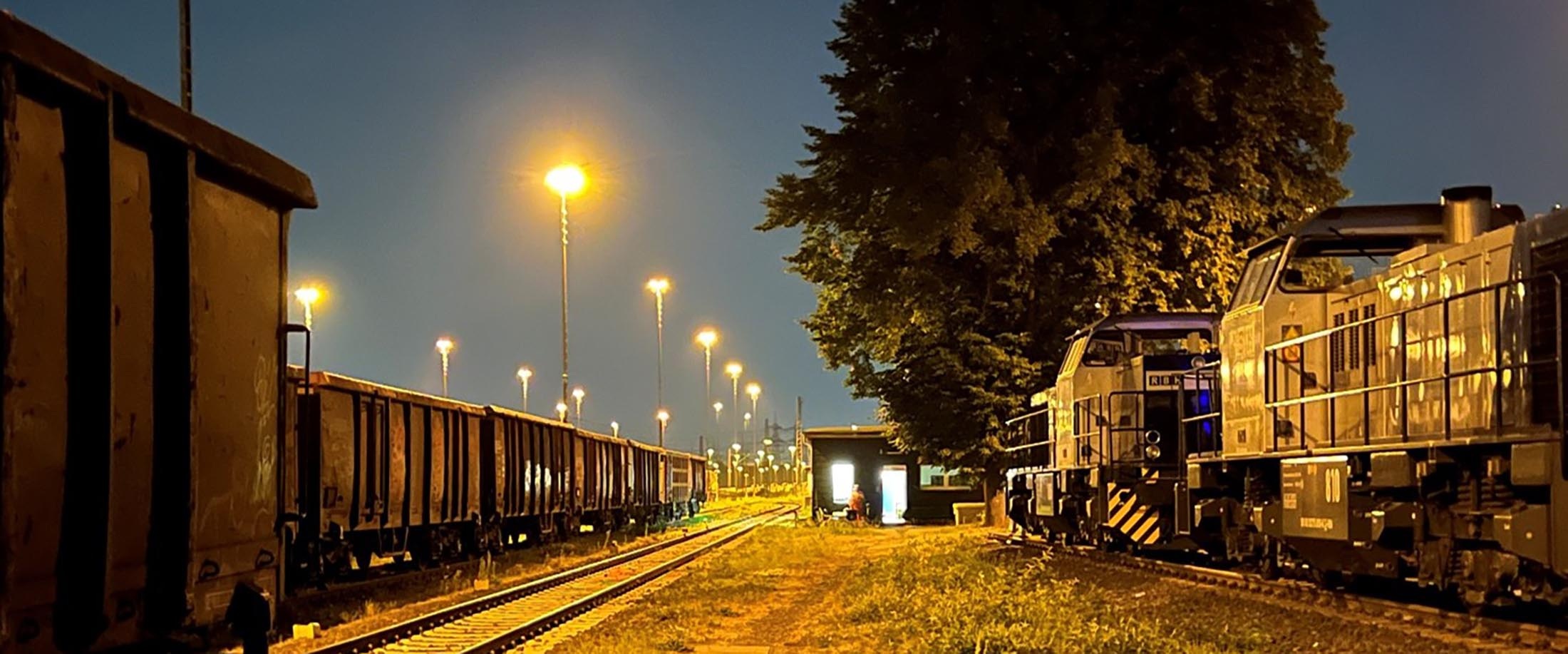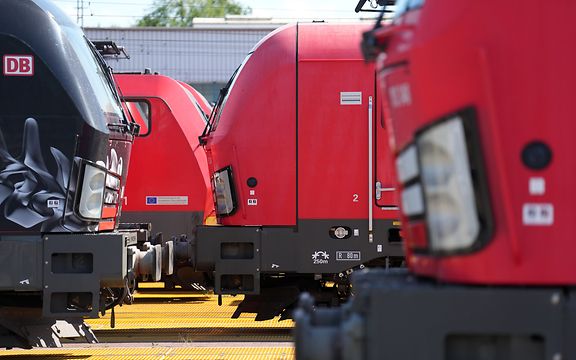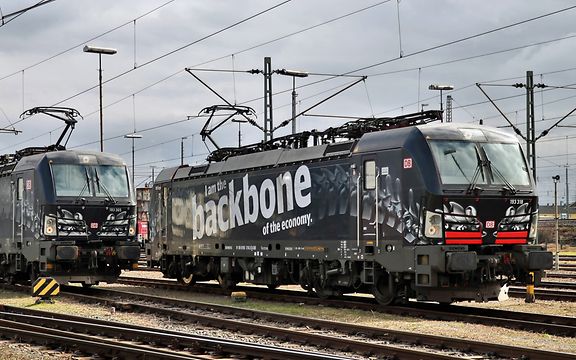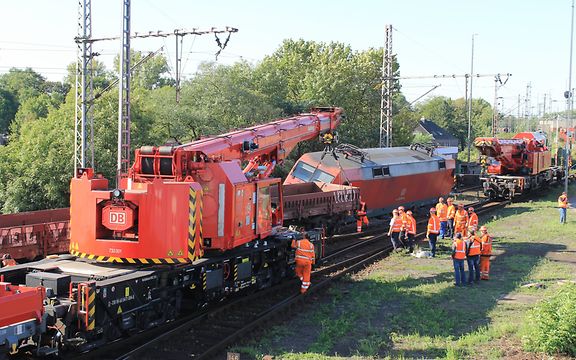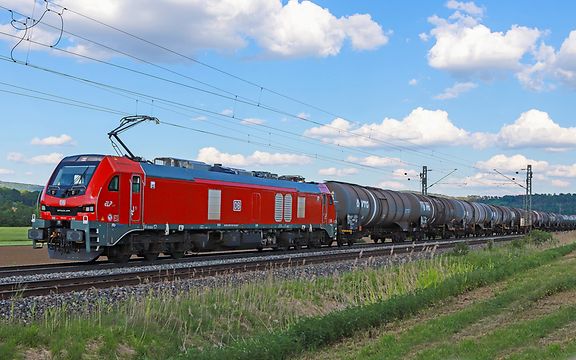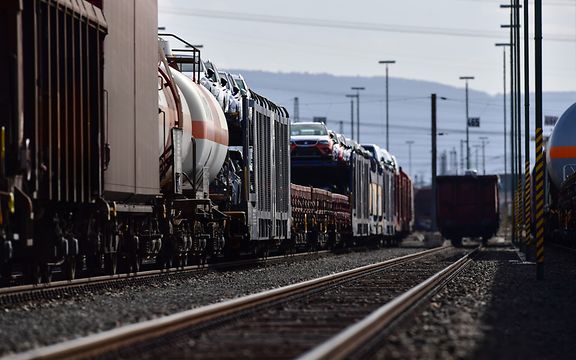Night-time in the marshalling yard, part 1
How things work at the hub of single-wagon transport.
Thousands of freight wagons travel across Germany in single-wagon transport every day. But what actually makes that happen? How do all the wagons end up with the right freight in the right train? Which tasks have to be performed, who performs them, and what skills do they need? Find out all about it in our two-part series about the night shift in a marshalling yard.
It sounds simple, but it's not
The easy explanation is that trains with freight wagons from various customers come into the marshalling yard, the wagons are separated from their original trains and rearranged to form new trains, and the new trains then continue on to their destinations. But it's not quite that simple. "A lot of steps take place between a train's arrival and its departure, with different employees performing a wide range of tasks in compliance with fixed guidelines," says the DB Cargo group leader at the Oberhausen marshalling yard.
His team works on every train that enters and leaves the marshalling yard, handling up to 3,000 freight wagons per night shift. The marshalling team plays the key role in orchestrating the process, preparing the formation of trains, assigning crews, and allocating incoming trains to tracks on the hump.
What does "hump" mean in a marshalling yard?
The heart of a marshalling yard is the "hump", a slight rise onto which a shunting locomotive pushes wagons it has collected previously. The wagons are separated at the top; from there they roll downhill under the influence of gravity, guided to their assigned tracks by points.
While the wagons are being distributed, it's crucial that every wagon can be identified so it can leave the marshalling yard in the correct train later. Each freight wagon is assigned its own number, a code that carries important information about the wagon's contents, such as whether it contains dangerous goods. Armed with this information, the dispatcher can assign each incoming train to a track on the hump. Workers uncouple incoming locomotives and couple shunting engines. Then it's off to the hump.
Many skills needed
A few preparatory steps are needed to make sure everything goes smoothly. For each train, shunting staff work with the dispatcher to draw up a splitting list, which is provided to the employees on the hump. This list ensures that a train is broken up correctly and that its wagons are correctly assigned to the new trains that leave the marshalling yard later.
Over the hump
But before a shunting engine can push wagons up the hump, the wagon inspector comes into play. Their job is to check every wagon for damage and verify that the cargo is properly secured. If all the wagons are in working order, have passed their brake tests and had any minor damage repaired, it's finally time to send them over the hump.
In part two, we'll look at what happens next for the freight wagons and how the shunting team work together.
